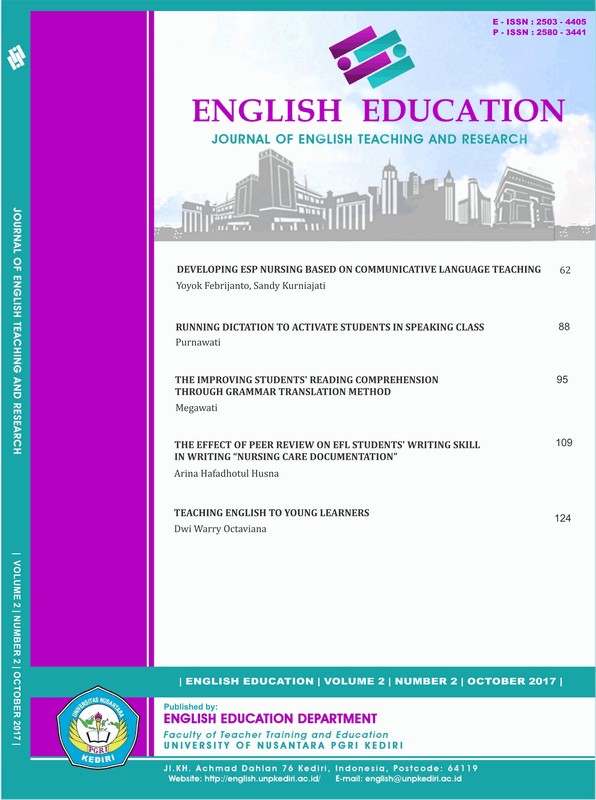THE IMPROVING STUDENTS’ READING COMPREHENSION THROUGH GRAMMAR TRANSLATION METHOD
DOI:
https://doi.org/10.29407/jetar.v2i2.833Abstract
The objective of the research is to improving students’reading comprehension throughgrammar translation method toward the tenth grade students, even semester, 2016/2017 academic year of SMK PrivateTaposDepok.This present classroom action research was mainly aimed to find out the extent of reading comprehension improved through grammar translation method. The subject of the present research were the tenth grade student of SMK Private TaposDepok in academic year 2016/2017 that consisted of 33 males and females, whereas the data collected by interview, data, and observation.
The result of the post test in each cycle totally showed that there was significant improvement of the subject’ability in reading comprehension in which their it pointed out that the level improved from insufficient to good. This is evidences with the average reading test in every cycle can improved that is on cycle I=6,76; cycle II=7,35; cycle III=7,80 and the result of the interview concluded that learning reading comprehension through grammar translation method is fun for the students. This research showed positive changing behavior of the subjects in which their attitudes and motivation increased significantly toward reading comprehension.
The result of the observation concluded that grammar translation method can improved students’ reading comprehension at tenth grade of SMK Private TaposDepokin Academic 2016/2017.
Keywords: Reading Comprehension, Grammar Translation Method
Downloads
Downloads
Published
Issue
Section
License
Authors who publish with this journal agree to the following terms:
- Copyright on any article is retained by the author(s).
- The author grants the journal, the right of first publication with the work simultaneously licensed under a Creative Commons Attribution License that allows others to share the work with an acknowledgment of the work’s authorship and initial publication in this journal.
- Authors are able to enter into separate, additional contractual arrangements for the non-exclusive distribution of the journal’s published version of the work (e.g., post it to an institutional repository or publish it in a book), with an acknowledgment of its initial publication in this journal.
- Authors are permitted and encouraged to post their work online (e.g., in institutional repositories or on their website) prior to and during the submission process, as it can lead to productive exchanges, as well as earlier and greater citation of published work.
- The article and any associated published material is distributed under the Creative Commons Attribution-ShareAlike 4.0 International License








 Article template
Article template



